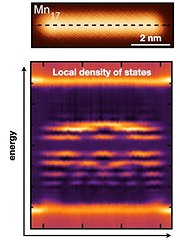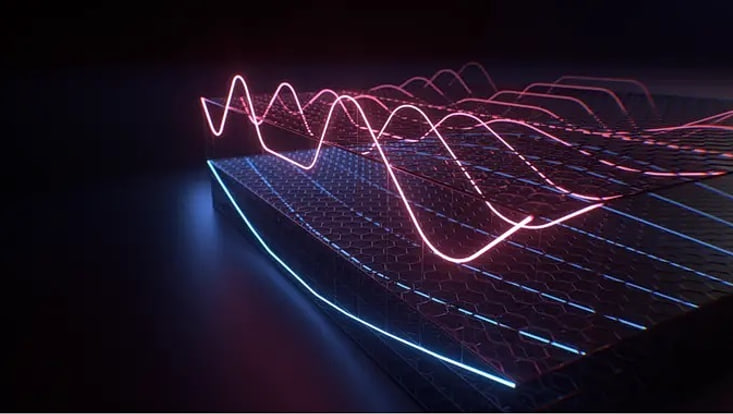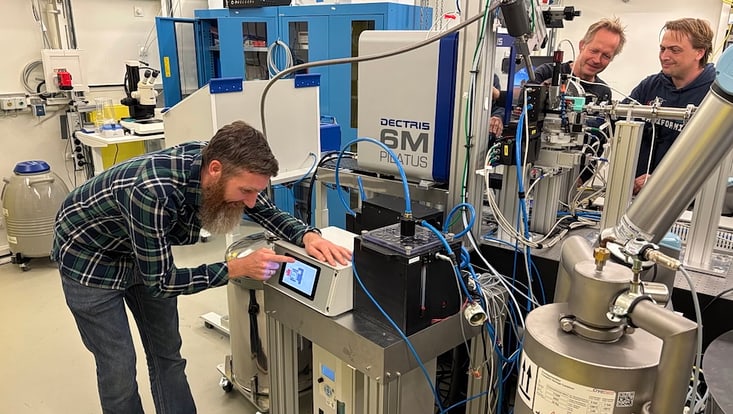Imaging of Matter
A perfect gap in Majorana’s world
20 May 2021

Photo: UHH/MIN/Schneider
Researchers from the Department of Physics and the Cluster of Excellence “CUI: Advanced Imaging of Matter” have revealed how electronic bands form inside the band gap of an elemental superconductor when magnetic chains are assembled on its surface. By probing the band dispersion, the scientist extracted information about the topology of the electronic states enabling the prediction which of the bands are topologically non-trivial and thus expected to host an exotic Majorana mode. Majorana modes may eventually serve as a building block for a new generation of robust quantum computers. The study was published in the journal Nature Physics.
In recent years, huge efforts have been made in order to find unquestionable signatures of Majorana modes in condensed matter systems. As one example, theorists have predicted the emergence at the boundaries of magnetic chains on a superconducting surface if the electronic bands in these chains have non-trivial topology. A combined observation of a non-trivial band topology in the bulk together with localized modes at the boundaries would therefore provide very strong evidence that the boundary modes are indeed Majoranas. However, measurements of the bands in magnet-superconductor-hybrids turn out to be very challenging.
Recently, a team of physicists led by PD Dr. Jens Wiebe in the research group of Prof. Roland Wiesendanger has found a way to resolve the dispersion of these low-energy bands. They studied how the electronic structure of atomic Manganese chains emerges when the chains are assembled atom-by-atom on a superconducting Niobium(110) surface.

The wave-like character of quasiparticles confined within the perfectly defect-free chains leads to a quantum interference effect, which leads to a series of confined quantum states. “From these patterns, energy and momentum of the quasiparticles can be related and thus, information about the band dispersion can be extracted. We saw a dominant band, which appears to be gapped around zero-energy,” says first author Lucas Schneider, who is a a PhD candidate in the research group.
In addition, the researchers found that this band gap cannot be attributed to normal but only to an unconventional type of superconductivity, because measurements without momentum resolution would not be able to distinguish between these two cases. The scientists expected this type of superconductivity to lead to the emergence of Majorana modes at the two boundaries of the chain. Unexpectedly, the team did not find any signature of a Majorana mode from this particular band. The researchers presume that the apparent contradiction is most probably explained by an additional band with Dirac-like dispersion appearing inside the unconventional gap of the former band, which can be assigned to another orbital of the Manganese atoms. The more complex multi-orbital band structure puts additional constraints to the realization of Majorana modes in the magnetic chain platform.
“Accessing all this information enables an unprecedented microscopic understanding of topologically superconducting phases in magnetic chains - directly from experimental measurements,” says Lucas Schneider. Furthermore, it can help to characterize the nature of superconductivity in similar systems.
Citation
L. Schneider, Ph. Beck, Th. Posske, D. Crawford, E. Mascot, St. Rachel, R. Wiesendanger und J. Wiebe
"Topological Shiba bands in artificial spin chains on superconductors"
Nature Physics (2021).


